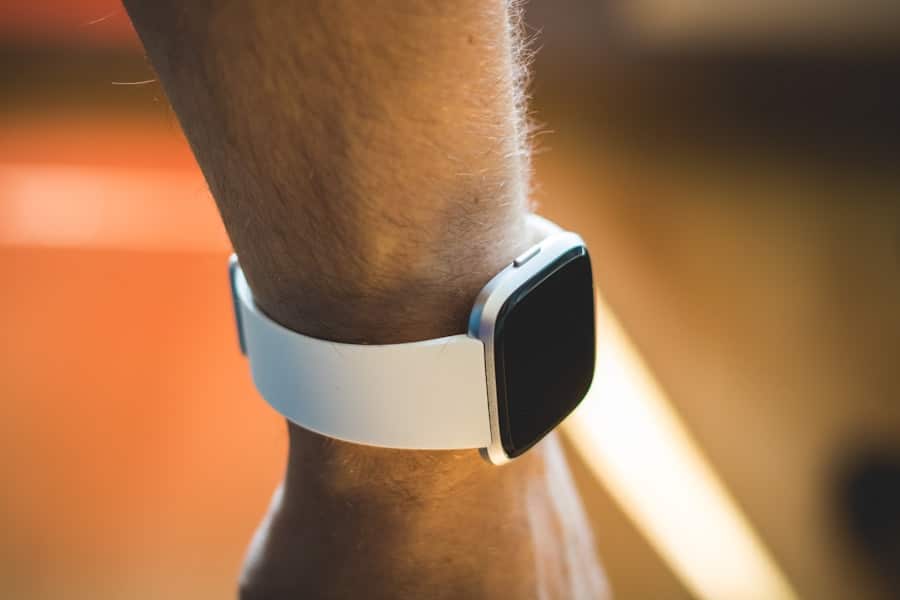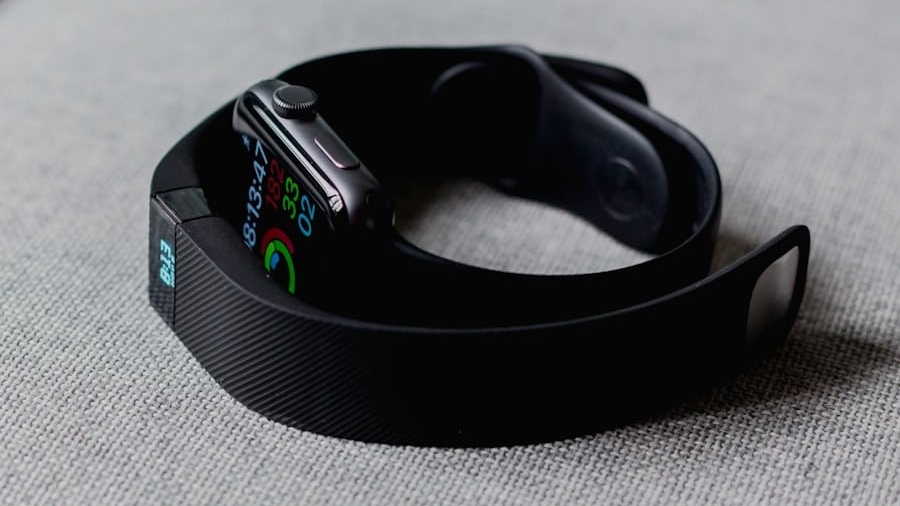Wearable technology has emerged as a transformative force in the realm of sports, revolutionizing how athletes train, compete, and recover. These devices, which range from smartwatches and fitness trackers to specialized sensors embedded in clothing, have become integral tools for both amateur and professional athletes. The rise of wearable technology can be attributed to advancements in sensor technology, data analytics, and wireless communication, allowing for real-time monitoring of various performance metrics.
As athletes strive for excellence, the integration of these devices into their training regimens has opened new avenues for optimizing performance and enhancing overall athletic capabilities. The adoption of wearable technology in sports is not merely a trend; it represents a paradigm shift in how athletes approach their training and competition. By providing immediate feedback on physiological parameters such as heart rate, speed, and distance covered, wearables empower athletes to make informed decisions about their training intensity and recovery strategies.
Furthermore, the data collected by these devices can be analyzed to identify patterns and trends over time, enabling athletes and coaches to tailor training programs to individual needs. This personalized approach is particularly beneficial in a competitive landscape where marginal gains can make a significant difference in performance outcomes.
Key Takeaways
- Wearable technology in sports has revolutionized the way athletes monitor their performance and prevent injuries.
- Athletes can now track performance metrics such as heart rate, speed, and distance covered in real-time using wearable devices.
- Wearable technology also plays a crucial role in injury prevention and recovery by monitoring factors like muscle fatigue and joint stress.
- Biomechanical analysis through wearable technology helps athletes optimize their technique and prevent overuse injuries.
- The use of wearable technology in team sports has enhanced communication, strategy, and performance analysis among players and coaches.
Monitoring Performance Metrics
Tracking Physiological Indicators
These devices are equipped with an array of sensors that track various physiological indicators, including heart rate variability, oxygen saturation levels, and even sleep quality. For instance, heart rate monitors can provide real-time data on an athlete’s cardiovascular response during training sessions, allowing them to adjust their effort levels accordingly.
Optimizing Performance
This capability is particularly valuable during high-intensity workouts or competitions where maintaining optimal heart rates can be crucial for performance. Moreover, wearables can track movement patterns and biomechanics through accelerometers and gyroscopes. This data is essential for understanding an athlete’s efficiency and effectiveness in their sport.
Setting Realistic Goals
For example, runners can analyze their stride length and cadence to optimize their running form, while cyclists can monitor their power output to ensure they are riding at peak efficiency. The ability to quantify these metrics not only aids in performance enhancement but also helps athletes set realistic goals based on empirical data rather than subjective feelings or assumptions.
Injury Prevention and Recovery

Injury prevention is a critical aspect of athletic performance, and wearable technology plays a pivotal role in this domain. By continuously monitoring an athlete’s physical condition, wearables can help identify early signs of fatigue or overtraining, which are often precursors to injuries. For instance, devices that measure muscle strain or joint load can alert athletes when they are pushing their bodies beyond safe limits.
This proactive approach allows for timely interventions, such as adjusting training loads or incorporating additional recovery strategies. Recovery is equally important in the athletic cycle, and wearables contribute significantly to this process as well. Many devices now include features that assess recovery metrics, such as heart rate recovery time and sleep quality.
Athletes can use this information to gauge how well their bodies are recuperating after intense training sessions or competitions. For example, a basketball player might find that their heart rate returns to baseline more slowly after a particularly grueling game, indicating a need for additional rest or recovery techniques like active stretching or foam rolling.
Biomechanical Analysis
Biomechanical analysis is another area where wearable technology has made significant strides. Advanced wearables equipped with motion capture capabilities can provide detailed insights into an athlete’s movement mechanics. This analysis is crucial for understanding how an athlete’s body moves during specific activities and identifying any inefficiencies or potential injury risks.
For instance, a soccer player wearing a motion-tracking device can receive feedback on their kicking technique, helping them refine their form to enhance accuracy and power while minimizing the risk of strain. Furthermore, biomechanical data collected from wearables can be used to create personalized training programs that address specific weaknesses or imbalances in an athlete’s movement patterns. Coaches can analyze this data to design drills that target areas needing improvement, whether it be strength training for underdeveloped muscle groups or flexibility exercises for tight joints.
This tailored approach not only enhances performance but also fosters long-term athletic development by instilling proper movement habits from an early stage.
Mental Performance and Mindfulness
While physical performance metrics are often the focus of wearable technology in sports, mental performance is equally critical for success. Emerging wearables are now incorporating features aimed at enhancing mental resilience and mindfulness among athletes. Devices that track stress levels through heart rate variability or skin conductance can provide valuable insights into an athlete’s mental state during training or competition.
Additionally, some wearables offer guided meditation or relaxation programs designed specifically for athletes. These features encourage users to engage in mental conditioning practices that can improve concentration and reduce anxiety before competitions.
For example, a swimmer might use a wearable device to practice visualization techniques while monitoring their heart rate to ensure they remain calm and focused before a race. By integrating mental performance tools into their training regimens, athletes can cultivate a holistic approach to their preparation that encompasses both physical and psychological readiness.
Wearable Technology in Team Sports

Empirical Evidence for Tactical Decisions
The data collected from wearables enables coaches to make informed decisions based on empirical evidence rather than relying solely on intuition. This data-driven approach facilitates communication between players and coaching staff regarding workload management. For instance, if a football player consistently logs high levels of exertion during training sessions, coaches can adjust practice intensity or provide additional rest days to prevent burnout or injury.
Fostering a Culture of Data-Driven Decision-Making
This collaborative approach fosters a culture of data-driven decision-making within teams, ultimately leading to improved outcomes on the field. By leveraging wearable technology, teams can optimize their performance, gain a competitive edge, and achieve success in their respective sports.
Future Trends in Wearable Technology for Athletes
As technology continues to evolve at a rapid pace, the future of wearable technology in sports holds exciting possibilities. One emerging trend is the integration of artificial intelligence (AI) into wearable devices. AI algorithms can analyze vast amounts of data collected from wearables to provide personalized recommendations for training regimens, nutrition plans, and recovery strategies based on an athlete’s unique physiological responses.
This level of customization could revolutionize how athletes approach their training and recovery processes. Another promising development is the miniaturization of sensors and the potential for embedding them directly into clothing or equipment rather than relying on standalone devices. This seamless integration would enhance comfort and usability while providing continuous monitoring without disrupting an athlete’s performance.
For example, smart fabrics could monitor muscle activity or hydration levels without the need for bulky devices strapped to the body. As these technologies advance, they will likely become more accessible to a broader range of athletes at all levels.
The Impact of Wearables on Athlete Performance and Injury Prevention
The impact of wearable technology on athlete performance and injury prevention cannot be overstated. By providing real-time data on various performance metrics, these devices empower athletes to make informed decisions about their training regimens while minimizing the risk of injuries through proactive monitoring. The integration of biomechanical analysis further enhances this capability by allowing athletes to refine their movement patterns for optimal efficiency.
Moreover, as the field continues to evolve with advancements in AI and sensor technology, the potential for personalized training experiences will only grow stronger. Athletes will increasingly rely on wearables not just for tracking physical performance but also for enhancing mental resilience through mindfulness practices. In team sports, the collaborative use of wearables will foster data-driven decision-making among coaches and players alike.
Ultimately, wearable technology represents a significant leap forward in how athletes prepare for competition and manage their health. As these innovations continue to develop, they will undoubtedly play a crucial role in shaping the future of sports performance and injury prevention strategies across all levels of athletic endeavor.
In a related article, Discover the Best Free Software for Voice Recording Now, explores how technology is revolutionizing the way we capture and analyze audio data. Just as wearables are transforming athlete performance and injury prevention, advancements in voice recording software are providing new tools for professionals in various industries to enhance their work. Whether it’s for podcasting, voiceovers, or transcribing interviews, this article highlights some of the top free software options available for voice recording.
FAQs
What are wearables?
Wearables are electronic devices that can be worn on the body as accessories or implants. They are designed to perform a specific function and are often used for tracking health and fitness data.
How do wearables support athlete performance?
Wearables can track various metrics such as heart rate, distance covered, speed, and even technique. This data can be used to analyze an athlete’s performance and make adjustments to training and technique to improve overall performance.
How do wearables help in injury prevention?
Wearables can monitor an athlete’s movements and provide real-time feedback on their form and technique. This can help identify potential issues that could lead to injury and allow for adjustments to be made to prevent them.
What types of wearables are commonly used by athletes?
Athletes commonly use fitness trackers, smartwatches, and specialized sports performance wearables such as smart clothing and sensor-embedded equipment to track their performance and prevent injuries.
Are wearables widely accepted in the sports industry?
Yes, wearables have become increasingly popular in the sports industry as they provide valuable data for athletes, coaches, and sports scientists to improve performance and reduce the risk of injury.

